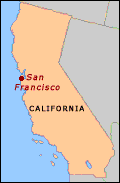 |





Worldtrek Iran Basecamp
|
 |

Democracy: We Like It, Just Not in Other Countries

When I got the assignment to cover U.S.-Iran relations in the 50s, I was a bit puzzled. I didn't have a real clue as to what had gone on and why it was important. And what did I know about Iran and its people? Only that they were terrorists who had kidnapped US citizens and held them hostage in the 80s. Iranians were radical Muslims with long beards and white turbans who liked to use bombs and hated America. But then I remembered trekker Neda, who of course does not wear a long black veil nor does she carry a grenade in her backpack. Her parents seemed so nice and normal too, challenging again my preconception of Iranians as evil, religious, violent fanatics. I had a hunch that this story was going to shake up my simplistic view of Iran just as meeting Neda's family had. I had no idea it would also completely shatter my view of the United States as a force for democracy and human rights abroad.
During World War II, Russia and the U.S. collaborated to help defeat the Nazis. The media depicted flattering portraits of "Uncle Joe" Stalin. As soon as the war ended, however, tensions between the two superpowers started heating up again. After World War II, the U.S. tried to contain Communism by integrating our economy with those of Europe and Japan, but something else was entering into the picture: the struggles of Third World countries yearning to be free after centuries of colonialism. India achieved independence from Britain in 1947. The Vietnamese were beginning their tragic war with their French occupiers. Colonial empires were collapsing, and revolutionary movements were springing up everywhere in Africa, Asia, and Latin and Central America. Some of these movements were sympathetic to Communism's message of empowering the workers and denouncing the rich.
 |
The United States was anxious about developments in the Third World. It needed raw materials and markets, and, especially, oil. Thus, the U.S. became obsessed with preventing the developing countries from "going communist" and falling under the influence of the Soviet Union. The Central Intelligence Agency (CIA) had been formed in 1947 for purposes of gathering intelligence. Now their mission was to do more than just plain old spying.

|
 |
Iran, a nation of 65 million people, borders the former Soviet Union. It became a critical hotspot during the Cold War in the 1950s. To get the scoop on one of the most important, yet largely forgotten, events of the twentieth century, Becky and I met with Maziar Behrooz, a professor at San Francisco State University and a first-generation Iranian-American. Prof. Behrooz's eloquent explanation of how the U.S. became involved with Iranian affairs was eye opening. No wonder they hate us, I thought. If a foreign country were to come into America and start organizing for the overthrow of President George Bush, I don't think we would be very happy about that. Yet that's exactly what we did to Iran in 1953, an event that altered the course of Iran's history and that affects that country to this day.
While not an official part of the British Empire, Iran had increasingly come under British control since the early part of the twentieth century. The Anglo-Iranian Oil Company controlled Iran's vast oil reserves. The "Iranian" part of the company's name was a joke to most Iranians. The British brought in mostly their own workers and sucked all the profits out of Iran. This did not sit well with some Iranians, who wanted their people to benefit from their country's resources. A constitutional revolution in 1906 had brought some reforms towards building a more representative government by shifting power away from the Shah. In 1941, during World War II, a new shah (the Iranian equivalent of a king) came to power. He was only 22.
The Shah brought into the parliament a European-educated lawyer named Mohammed Mossadegh, a fierce nationalist who quickly became admired for his impassioned speeches in favor of nationalizing the Anglo-Iranian Oil Company. Mossadegh's anti-imperialist stance angered the British, who were hugely dependent on Iran's oil. In 1951, the parliament voted to nationalize the oil, and the popular Mossadegh was named prime minister. Britain came up with a plan to oust Mossadegh and put more power back in the hands of the shah, who was considered to be more pro-British. However, Britain was still reeling from the devastation it suffered during World War II and the government knew it could not carry out the plot on its own. The British asked U.S. President Harry Truman for help. The Democratic Truman administration was sympathetic to the aspirations of the Iranians and tried to broker a compromise between the British and Iran. That compromise went nowhere. Britain then ordered an embargo on Iranian oil, which meant that Iran had no way to export its precious black goo.
|

Hooray for teachers!
|
In 1952, Republican Dwight Eisenhower won the U.S. presidency, campaigning on the theme that the Democrats had been too accommodating to communism and had thus "lost China." Never mind that most of the Chinese thought that Mao Tse Tung and the Communist victory in 1949 was a win because it represented the first popular, peasant-supported government in their history. With the Korean war raging and anti-Communist hysteria increasing, the Eisenhower administration signed on to get rid of Mossadegh, fearing that if they didn't act, Iran would become Communist or a second Korea. The CIA called the plan to get rid of Mossadegh "Operation Ajax."
The CIA began plotting how to install its own designated leader, General Fazlollah Zahedi, as prime minister. To do this, the CIA wrote two decrees, one calling for Mossadegh to step down and one appointing Zahedi as Mossadegh's successor. The Shah needed to sign the decrees, but there was one problem: The shah was a rather wimpy fellow. He feared his own throne would be jeopardized if he agreed to the plot. General H. Norman Schwarzkopf (yup, the father of the Persian Gulf War commander) was brought in to persuade the Shah. On August 13, 1953, the Shah signed the decrees and then promptly bolted out of town to Baghdad, Iraq.
Mossadegh, however, had been warned of the impending coup. He arrested pro-shah supporters and told the parliament members to go home. Tehran radio reported that the attempted coup had failed. The CIA was bewildered at the turn of events, and they were depressed that their operation was coming undone. They suggested to Kermit Roosevelt, the man in charge (and U.S. President Theodore Roosevelt's grandson), that he return home immediately. Then, Gen. Zahedi staged a counterattack! On August 19, newspapers published the Shah's decrees and pro-shah crowds flowed into the streets. Mossadegh was arrested and sentenced to three years in jail.
The coup marked the first time the U.S. helped to directly overthrow a democratic-oriented government. The CIA and U.S. government were ecstatic with the results. Said a CIA document: "It was a day that should never have ended. For it carried with it such a sense of excitement, of satisfaction and of jubilation, that it is doubtful whether any other can come up to it." Operation Ajax became the blueprint for a series of U.S.-sponsored government coups, some successful, as in Guatemala,
and some disastrous, as in the Bay of Pigs invasion of Cuba.
For Iranians, August 19, 1953, fatally ended their progress towards a more democratic government. The Shah would rule with an iron fist for the next 26 years, with ample support from the United States. All opposition political parties were squashed and thousands of dissidents would be jailed and murdered. Anger at the U.S. would culminate in the Islamic Revolution in 1979 that threw out the hated Shah and put into power Ayatollah Khomeini. When Iranian students held hundreds of Americans hostage at the U.S. embassy, it was done out of fear that the U.S. would somehow mess with the revolution, just as it had done in 1953. "Without the 1953 overthrow of Mossadegh, the 1979 Revolution is unimaginable," explained Prof. Behrooz.
The Islamic Revolution has become rightly known for its harsh theocracy that mirrors in many ways the repression that occurred during the Shah's reign. For more information on the revolution and life in Iran, check out the Worldtrek's dispatches from this fascinating and misunderstood land.
For five decades, the U.S. remained silent on its actions in Iran. Last year, Secretary of State Madeleine Albright came close to apologizing for what had happened. "The Eisenhower administration believed its actions were justified for strategic reasons. But the coup was clearly a setback for Iran's political development. And it is easy to see now why many Iranians continue to resent this intervention by America in their internal affairs," she said.
For the past few decades, American involvement in other countries has been justified because of the Communist threat. Yet in Iran, there was absolutely no basis for this fear. The Communist Party, Tudeh, was not that powerful and in no position to take over the country. And it didn't even like Mossadegh! Tudeh followers thought he was a sellout who was too closely aligned to the Americans. Prof. Behrooz's father had been a member of Tudeh, which he later admitted had been a stupid mistake. The Soviets were too busy trying to control their Eastern European satellite states, such as Hungary and Poland, to bother with Iran. Mossadegh is now a martyr to many Iranians, particularly the younger generation that is hungry for change and tired of their government. I cheer them on and hope that if democratic changes do come to Iran, America will have learned from its past, and will respect the dreams and wishes of the Iranian people by minding its own business.
Irene
Please email me at:
irene@ustrek.org
Links to Other Dispatches
Rebecca - Memories from the forgotten war in Korea
Daphne - Up, up and away in an airplane museum in Berlin
Stephanie - When the arms race got real and almost deadly!
MAD- Star Wars: What would YOU do with $70 billion?
Team - How would you like to buy some furniture, or maybe Guatemala?
|



